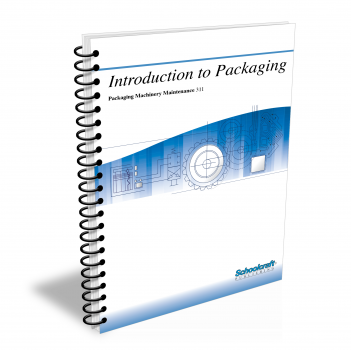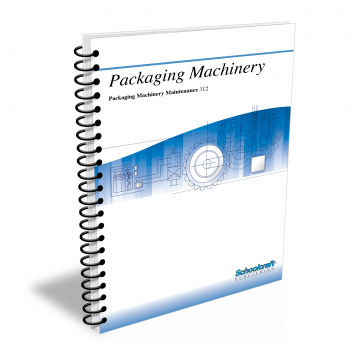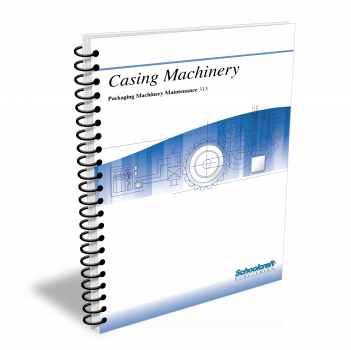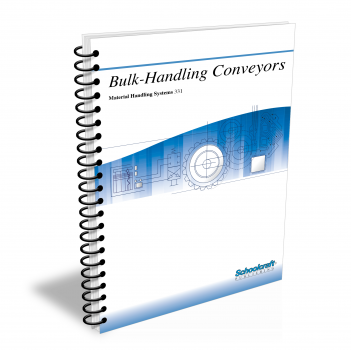Introduction to Packaging

Course Number: 311
The Introduction to Packaging textbook covers the job of packaging mechanic, providing detail on major types of packaging machinery. It covers various mechanical drives, couplings, motors, brakes, variable speed drives, clutches, electrical controls, motor starters, event sequencing controls, time delays, and relays. It also includes packaging specifics: types of materials, methods of filling, methods of sealing, weights, and volumetric measurements.
Does your curriculum require additional topics not included in this textbook? Build a customized version of the Introduction to Packaging textbook below.
Recommended Contact Hours – 20
Preview a Chapter
Available Supporting Material
- Table of Contents
- Exam Copies
- Suggested Titles
Table of Contents
Chapter 1: The Packaging Mechanic
Topics: Packaging operations; Machinery maintenance; Planned maintenance; Lubrication
Learning Objectives:
- Describe types of machines for packing and filling.
- Describe packaging machinery breakdown maintenance procedures.
- List specific requirements for planned packaging machinery maintenance.
- Explain packaging machinery lubrication selection, scheduling, and correct application.
Chapter 2: Actuating Mechanisms
Topics: Cranks; Cams; Intermittent motion mechanisms; Geneva wheels; Drives; Angle-doubling drives; Toggle links; Detents; Overload protection
Learning Objectives:
- Explain the operation of the lever and crank.
- Describe the differences among types of cams.
- Explain how ratchet wheels and Geneva wheels produce intermittent motion.
- Describe reciprocating and oscillating drive mechanisms.
Chapter 3: Problem Solving Principles
Topics: Elements and tolerances of measurement; Types of packaging machines; Troubleshooting machines; Determining causes of trouble
Learning Objectives:
- Describe the differences between intermittent-motion and continuous-motion packaging machines.
- Explain how to time a packaging machine with a timing dial.
- Define the four basic machineelements-timing, position, stroke, and alignment.
- List correct packaging machine troubleshooting steps.
Chapter 4: Mechanical Drives
Topics: Drive mechanisms; Coupling construction and installation; Belt and chain drives; Speed reducers; Gearing
Learning Objectives:
- List the functions of couplings.
- Explain the differences among the more common types of couplings.
- Describe how to check coupling alignment and how to correct a misalignment.
- Compare the different types of belt and chain drives.
- Describe the different types of speed reducers and gearing.
Chapter 5: Motors and Brakes
Topics: Primary drive components; Motor construction classification; Mechanical/electrical speed drives; Clutches; Brakes; Maintenance
Learning Objectives:
- Describe the basic features of ac motors.
- Compare the different types of fractional-horsepower motors and three-phase motors.
- List the features of common and special types of motors.
- Explain how variable-speed units work.
- Describe the operation and use of electric, hydraulic, and mechanical clutches.
Chapter 6: Electrical Controls
Topics: Startup and running sequence; Motor starters; Machine control; Time delay relays; Product control; Adhesive application; Product sensors
Learning Objectives:
- Describe the elements of a packaging machine's start-up sequence.
- Explain how thermal overload and melting alloy starters work.
- Explain the use of detectors and time delays in packaging machine control.
- Describe how adhesive is applied.
- Explain the differences in operation among types of product detectors.
Chapter 7: Packaging Materials
Topics: Shrink and nonshrink materials; Combination and water soluble film; Plain and coated papers; Chip-board cartons; Glass and plastic bottles and jars
Learning Objectives:
- List the characteristics of film.
- Compare the different types of shrink film.
- Name the different types of combination films.
- Describe the uses of water-soluble film, kraft paper, and chipboard.
- List the advantages and disadvantages of glass and plastic bottles and jars.
Chapter 8: Methods of Filling
Topics: Flexible packaging; Vertical and horizontal filling machines; Pouch, weigh, carton, and liquid filling; Filling by count
Learning Objectives:
- Describe the operation of vertical and horizontal flexible film packaging machines.
- Explain how volumetric pouch filters work.
- Explain how carton-filling and liquid-filling machines work.
- Describe methods of filling by count.
Chapter 9: Methods of Sealing
Topics: Tube, film, and high-frequency sealing; Capping; Seaming; Tying; Sewing; Gluing; Stapling; Stitching; Strapping
Learning Objectives:
- Describe how plastic and metal tubes are sealed.
- Explain the operation of different types of film sealers.
- Describe how high-frequency sealers work.
- Explain the basics of cappers and seamers.
- Describe correct procedures for using hot and cold glues.
Chapter 10: Weighing and Measuring
Topics: Units of weight; Volume measurement; Weighing devices; Scale components; Net weighers; Controls; Checkweighers; Installation
Learning Objectives:
- Explain the uses of gross, net, and check weighers.
- Compare the mechanisms of counterbalances and force balance systems.
- List the components in a scalesystem.
- Explain how typical check weighers work.
- Describe proper troubleshooting, maintenance, and installation techniques for scales.
Request Exam Copies
Exam Copies
Ready to see a copy of our textbooks? After selecting which textbooks you’d like to review for your course, you can submit your request by either logging in or creating an account so we know where to ship your exam copies. A representative from Schoolcraft will contact you to confirm and finish processing your request.
Exam copies are always free and yours to keep.
Selected Exam Copies
none selected
* Maximum of five copies can be ordered


